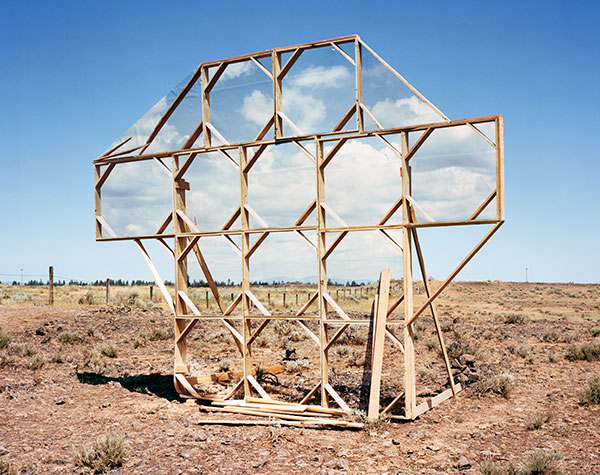Chris Engman
Saturday, 18 December 2010
Work from his oeuvre.
“We often say, photographs “capture” time. But to capture something is not to understand it, because in the act of capture the thing is changed. Family albums, travel photographs- what they do with time is give it boundaries. They make memory possible by giving it shape. They describe an event or a place as if in the absence of time, as if time does not exist.
My recent work aims at a photography that can speak to the passage of time more as it is experienced and in doing so it aims to enhance that experience.
Take, for example, the piece Three Moments [top image]. These were highly labored moments, each a month apart, each isolated and made into physical objects. The second moment attempts to recapture the first, while the third attempts to recapture them both. The result is meant to feel like a return to a place that may not seem to have changed, yet- since every instance of time and place is singular- it is perpetually and irrevocably being lost.
If I were to return to the place it would be a different place. Every time you sit in your favorite chair it is a different chair.
Rotation also attempts to make palpable an aspect of the passage of time. By repositioning the ladder and camera every thirty minutes, the angle of the object to its shadow has been made constant. One visible record for the passage of time, the length of shadows created by the vertical motion of the sun, has been isolated. The other, the directional movement of shadows created by the horizontal movement of the sun, has been eliminated. In its place is a more visceral visual record, the rotation of the earth.
Focused attention on the passage of time heightens the senses to it. A concept that can seem intangible is given weight.
Attention to time and place informed the making of Inversion. With the exception of solar noon, every moment of the day has a twin, opposite moment, when the angle of the sun to the horizon is the same but its direction is opposite from south. This pattern is created everywhere every day by the earth and the sun. My diptych is an act of participation in which the camera faces north, a pile of cinder blocks is manually inverted, and two such twin moments are observed.
In the end, it seems, we are here to observe.” – Chris Engman


